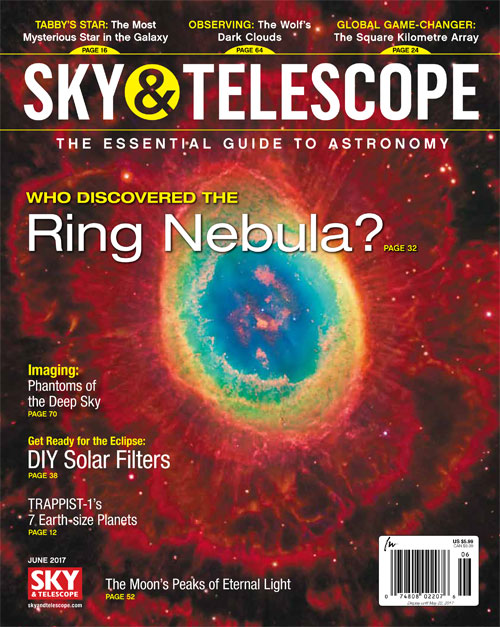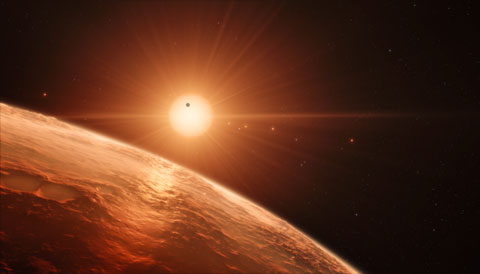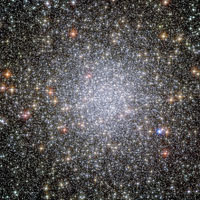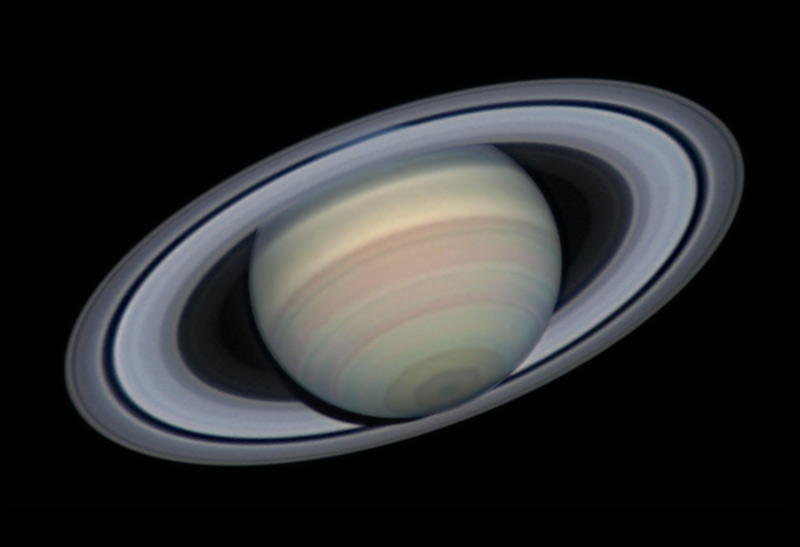 What is Tabby's Star? Who Discovered the Ring Nebula? Can Life Survive in TRAPPIST-1?
What is Tabby's Star? Who Discovered the Ring Nebula? Can Life Survive in TRAPPIST-1?
Mysteries abound in astronomy, and not all the questions have answers — yet. Tabby's Star is emblematic of the search for truth. This seemingly ordinary star occasionally undergoes rapid dips and dives in brightness, a phenomenon that Benjamin Montet and discoverer Tabetha Boyajian are still trying to understand. The recent discovery of not one or two, but seven planets around the TRAPPIST-1 star, three of them in the habitable zone, poses interesting questions for those seeking life on other planets. Even seemingly settled questions, such as who discovered the Ring Nebula, can earn a new answer with historical research from S&T Contributing Editor Don Olsen and colleague Giovanni Caglieris. Join the search for answers, and also find explanations for a DIY solar filter, a guide to observing RR Lyrae stars, a rove around the Moon's sunlit poles, and more, in the June 2017 issue of Sky & Telescope.
Feature Articles

ESO / M. Kornmesser
Seven Earth-Size Planets Orbit Dim Star
Several of TRAPPIST-1's worlds might have the potential for liquid surface water.
By Camille Carlisle
The Most Mysterious Star in the Galaxy
The strange, dips, and dives of an otherwise ordinary star defy most — but not all — explanations.
By Benjamin Montet & Tabetha Boyajian
The Square Kilometre Array
Spread across two continents, the SKA will be the largest astronomical facility ever built.
By Govert Schilling
Who Discovered the Ring Nebula?
All the books name the wrong "discoverer" for this iconic object.
By Don Olson & Giovanni Maria Caglieris
The Dark Wolf of Summer
Stay up late to track down these absorption nebulae in Lupus.
By Richard P. Wilds
Phantoms of the Deep Sky
Hunt down molecular clouds and other elusive targets.
By Richard Jakiel
Beyond the Printed Page

Intermediate-Size Black Hole?
Read the full story on the possible black hole lurking in the globular star cluster 47 Tucanae.
Personalized Astronomical Almanac
To find out what's visible in the night sky from your location, visit our Astronomical Almanac.
AAVSO Campaign to Observe Tabby's Star
Find more information on the ongoing campaign to monitor Tabby’s star for any new changes.
Lunar Librations and Phases of the Moon
Librations and other lunar data for June 2017.
ALSO IN THIS ISSUE

Aim High
Jupiter and Saturn offer good telescopic views for late-night summer observing.
By Fred Schaaf
The Fast Pulse of RR Lyraes
An amateur program tracks the quirks of the oldest standard-candle stars in the universe.
By Alan MacRobert
Peaks of "Eternal" Light
If we ever try to live on the Moon, the best locations will be polar mountains bathed in nearly continuous sunlight.
By Charles Wood
Doodles in the Sky
From sharks to dogs, hats to rings, these night-sky patterns will have you seeking more.
By Sue French
Table of Contents
See what else June's issue has to offer.
 1
1

Comments
Ron
May 29, 2017 at 8:29 pm
Really enjoyed Camille M. Carlisle article.
You must be logged in to post a comment.
You must be logged in to post a comment.